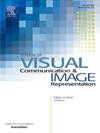Enhancement-suppression driven lightweight fine-grained micro-expression recognition
IF 2.6
4区 计算机科学
Q2 COMPUTER SCIENCE, INFORMATION SYSTEMS
Journal of Visual Communication and Image Representation
Pub Date : 2024-12-24
DOI:10.1016/j.jvcir.2024.104383
引用次数: 0
Abstract
Micro-expressions are short-lived and authentic emotional expressions used in several fields such as deception detection, criminal analysis, and medical diagnosis. Although deep learning-based approaches have achieved outstanding performance in micro-expression recognition, the recognition performance of lightweight networks for terminal applications is still unsatisfactory. This is mainly because existing models either excessively focus on a single region or lack comprehensiveness in identifying various regions, resulting in insufficient extraction of fine-grained features. To address this problem, this paper proposes a lightweight micro-expression recognition framework –Lightweight Fine-Grained Network (LFGNet). The proposed network adopts EdgeNeXt as the backbone network to effectively combine local and global features, as a result, it greatly reduces the complexity of the model while capturing micro-expression actions. To further enhance the feature extraction ability of the model, the Enhancement-Suppression Module (ESM) is developed where the Feature Suppression Module(FSM) is used to force the model to extract other potential features at deeper layers. Finally, a multi-scale Feature Fusion Module (FFM) is proposed to weigh the fusion of the learned features at different granularity scales for improving the robustness of the model. Experimental results, obtained from four datasets, demonstrate that the proposed method outperforms already existing methods in terms of recognition accuracy and model complexity.
求助全文
约1分钟内获得全文
求助全文
来源期刊

Journal of Visual Communication and Image Representation
工程技术-计算机:软件工程
CiteScore
5.40
自引率
11.50%
发文量
188
审稿时长
9.9 months
期刊介绍:
The Journal of Visual Communication and Image Representation publishes papers on state-of-the-art visual communication and image representation, with emphasis on novel technologies and theoretical work in this multidisciplinary area of pure and applied research. The field of visual communication and image representation is considered in its broadest sense and covers both digital and analog aspects as well as processing and communication in biological visual systems.
 求助内容:
求助内容: 应助结果提醒方式:
应助结果提醒方式:


